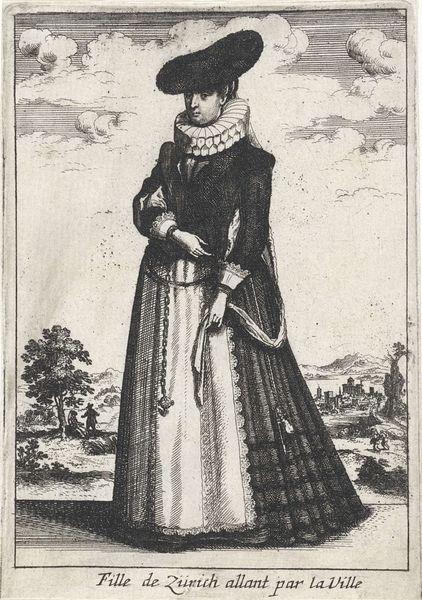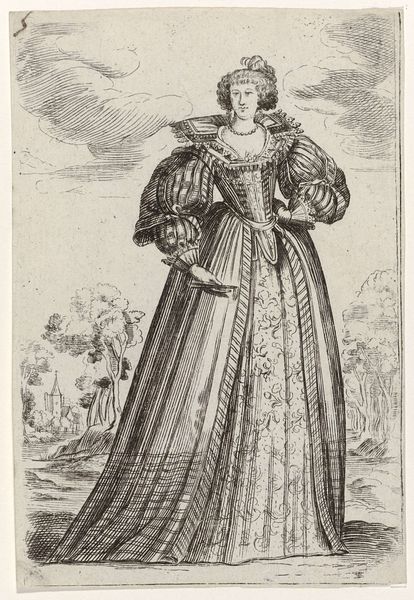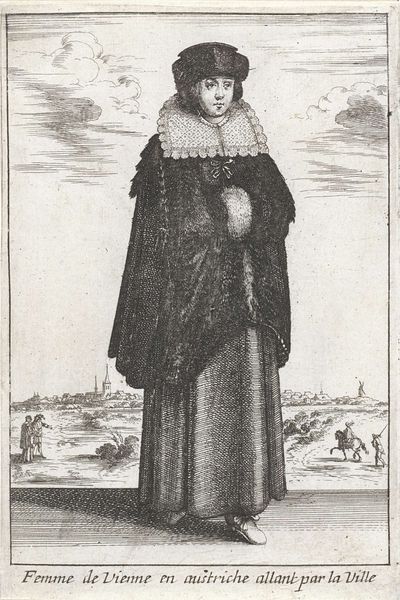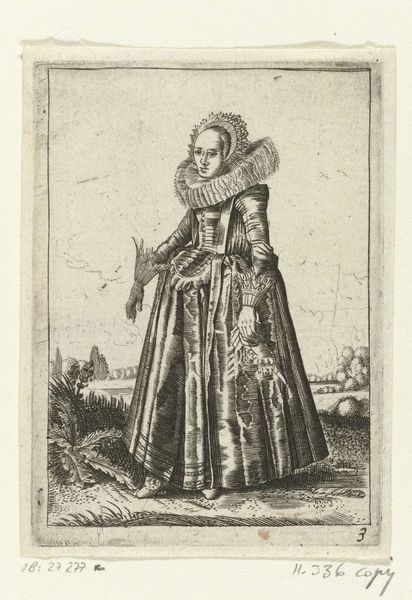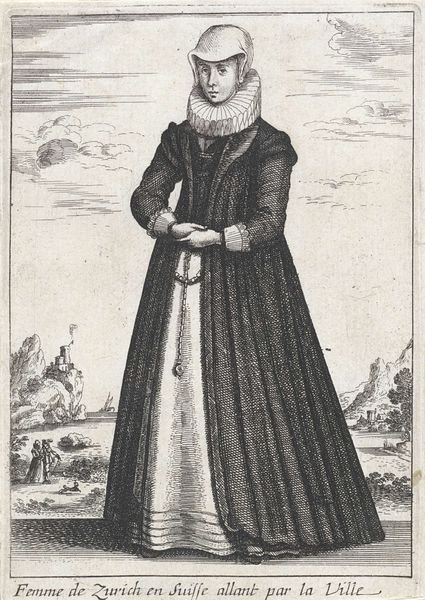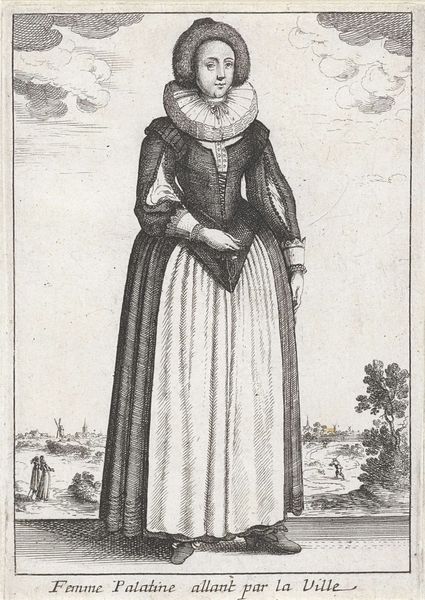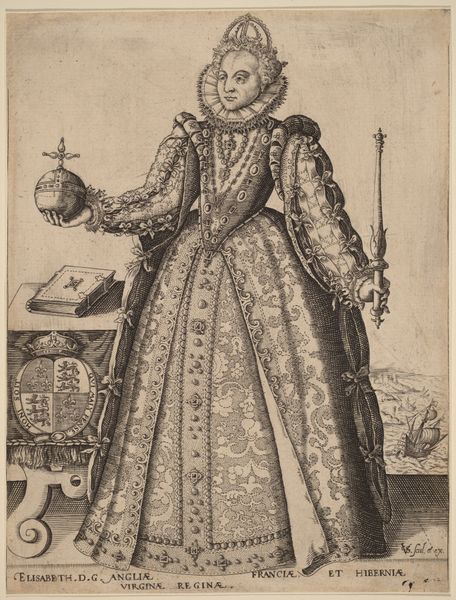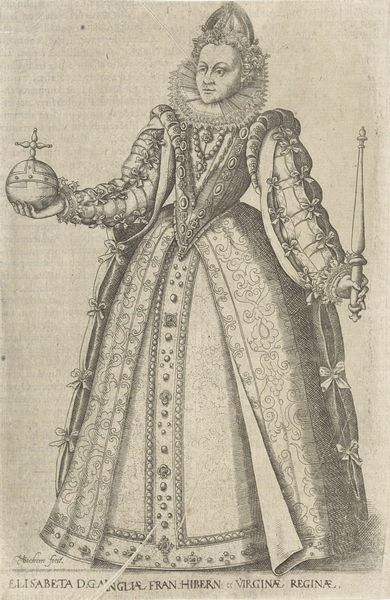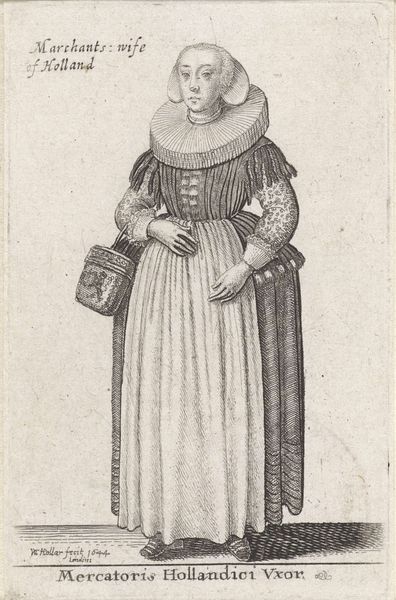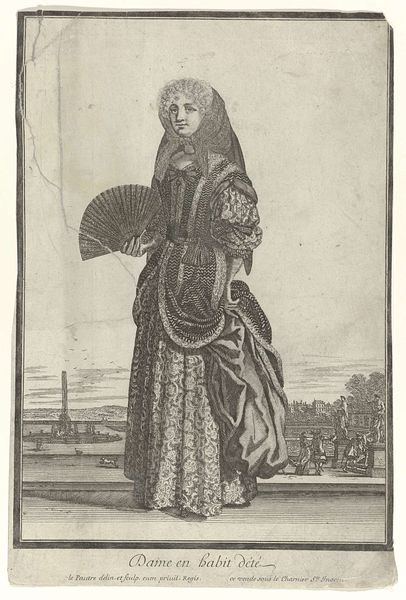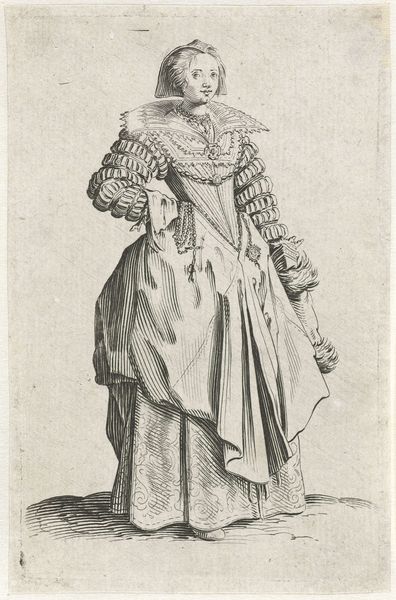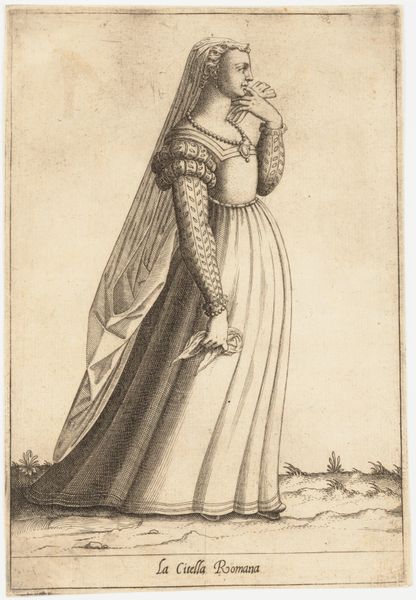
print, engraving
#
portrait
#
baroque
# print
#
engraving
Dimensions: sheet: 22.3 × 11.6 cm (8 3/4 × 4 9/16 in.)
Copyright: National Gallery of Art: CC0 1.0
Curator: Before us is a print identified as a portrait of Amalia, Wife of Frederick Henry, Prince of Orange. This piece, likely produced in the Baroque period, showcases meticulous engraving. What strikes you first about it? Editor: It's undeniably grand! The texture of the engraving gives the impression of elaborate fabrics, while a battle scene in the background feels weighty with historical importance. It appears as if power and serenity have found a home in one singular portrait. Curator: Indeed, observe the crisp, clean lines defining Amalia's ruff and gown; how does that impact our interpretation of the engraving as a whole? Editor: It gives us the visual impression of hierarchy. Her upward gaze could imply aspiration, maybe even spiritual elevation; after all, portraiture and politics have so often entwined themselves. Does this book and feather signify aspects of her personal interests and values, maybe a connection to a wider movement of learning or devotion? Curator: Symbolically, one can hypothesize her personal library represents her own power. Editor: Note, the architecture present on the bottom half of each side. On one side, a battle in play with army members on horseback. And on the opposite architecture, buildings sit prominently to act as the infrastructure of each city mentioned. The engraver uses all negative space to create the buildings that bring architecture into this portrait. Curator: Very insightful, the linear exactitude evident is something we, even centuries removed from its production, cannot help but acknowledge its importance as visual language. And by examining the balance and design of the forms, one can see that Frederick de Wit creates his own dialogue between symbolic power and aesthetic order. Editor: And that tension of power and its aesthetics invites modern eyes to view it in the context of how images of rulers—powerful leaders—continue to inform what, who and why cultures select figures to follow in hopes of salvation. Curator: A fine summary. This piece gives our audiences today insight to history. Editor: Agreed.
Comments
No comments
Be the first to comment and join the conversation on the ultimate creative platform.
